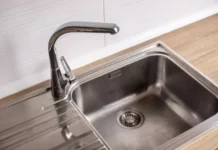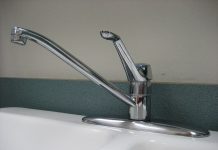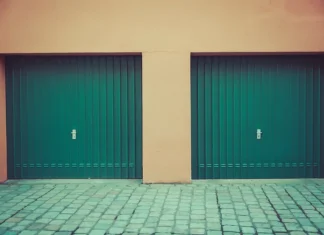If you are suffering from low water pressure in the kitchen sink, we understand your pain. Due to low water pressure, washing the dishes can become a nightmare as it increases the time and effort to get the job done. In other words, you will end up frustrated and a moment away from lashing out at your kids or other family members. The only way to avoid this is to increase the water pressure. After all, it is the only logical thing to do. This blog post will let you know everything there is about increasing the kitchen sink’s water pressure. Let us start.
Step By Step Guide to Increase Water Pressure in Kitchen Sink
There are several things that you can do to fix the low water pressure in the kitchen sink:
1. Clogged Aerators
Look at the kitchen faucet, and you will notice a wire-like lid. It is called an aerator. The aerator, located at the tip of the faucet, is often the culprit behind low water pressure. If you are facing low water pressure, you need to assess if the aerator is working correctly. At times, minerals and other debris can become logged in the faucet, decreasing the water pressure significantly. All you need to do is remove the aerator using a slip-joint plier or any other tool. Make sure you cover the sink before doing so. Why? The plier or the other tools might slip out of your hand, resulting in damage or at least a scratch on the sink. Once you remove it, use a toothbrush or a pin to clean it up. Other than this, you can leave it in vinegar for a few hours. It will clean up the entire aerator. Now, insert it back, and you will notice that the water pressure is back to normal or even better.
2. Inspect the Faucet
If cleaning the aerator doesn’t fix the problem, the faucet might be the issue. Check for any clear signs of damage or being worn out. Often, parts inside the faucet, such as washers or O-rings, may need to be replaced.

3. Shut-Off Valve Problem
One of the answers to fixing a kitchen faucet that has low water pressure is by playing around with the shut-off valve. The purpose of this valve is to stop the water supply to the sink. If you look underneath your sink, you will find this valve. Turn on the tap and play around the faucet. First, turn it off and then open it again. If there is no difference in the water pressure, there is a problem with the valve. You need to turn off the water supply coming into the kitchen and then replace the valve. 9 times out of 10, this is the answer on how to fix low water pressure in the kitchen sink.
You may also like to Read: Why does my sink smell like Rotten Eggs
4. Check for Leaks
Leaks in your plumbing can cause low water pressure. Make sure to check the pipes under your sink and around your house for any water drips or leaks. Even a small leak can lead to a big drop in water pressure, so it’s important to catch and fix them early.
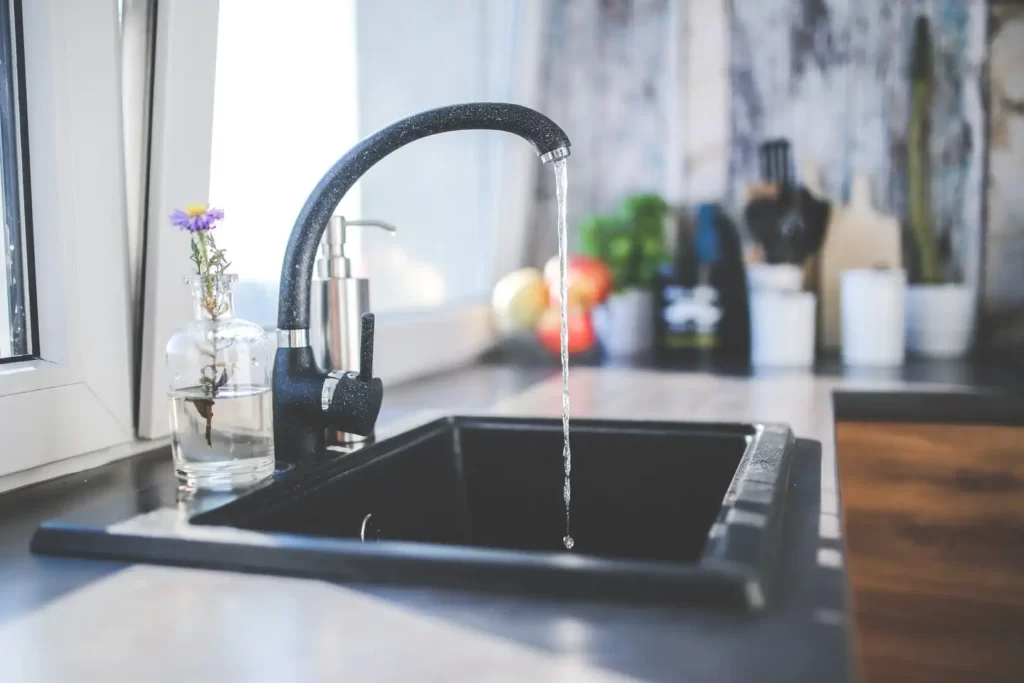
5. Pressure Valve
All homes have a pressure valve whose purpose is to regulate the water pressure throughout the house. Usually, it is located near the main water supply line coming into the house. In certain houses, each faucet has a separate valve. Some may have unknowingly fiddled around with the valve, causing a drop in water pressure. All you need is a wrench or any other tool to rotate the valve. It will surely improve the kitchen sink’s water pressure.
6. Damaged/Clogged Water Pipeline
Another answer to how to fix a kitchen faucet that has low water pressure is by checking for damaged or clogged water pipelines. Since the water pipeline is underneath the flooring or inside the wall in certain homes, you will need to call a plumber. The reason is that a person without any knowledge of water pipelines cannot fix this problem, regardless of how much they learn through YouTube or DIY tutorials.
7. Assess the Water Pressure Regulator
If your home is equipped with a water pressure regulator, it might be set too low or could be malfunctioning. Adjusting or replacing this regulator can solve water pressure issues.
You may also like to Read: What is the Effect of Oven Cleaner on Kitchen Sink
8. Contact the Water Supplier
Another option to fix the low water pressure is contacting the water supplier. At times, the issue is on their end. They might be going through a problem or something similar due to which the pressure is low. So before you opt for an expensive fix, try talking to your water company.
9. Consult a Professional
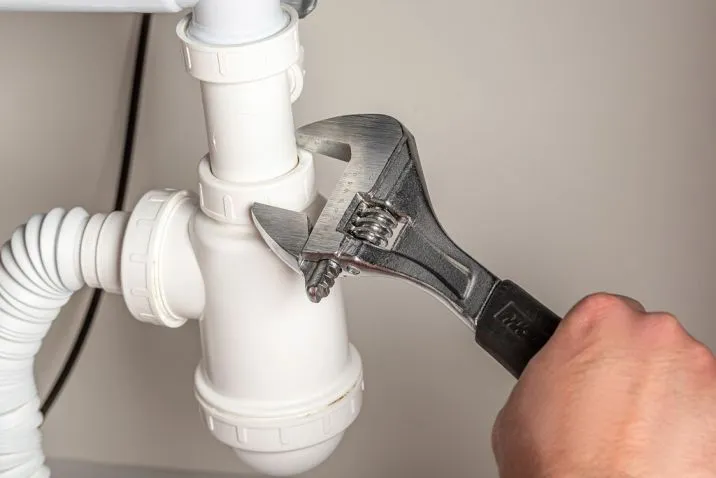
If you’re unsure about what’s causing the low water pressure, it’s a good idea to get help from a professional plumber. They have the skills to identify complicated problems and suggest fixes that you might not think of on your own.
Wrap Up
Improving the water pressure in your kitchen sink is usually a straightforward process. By following these steps, you can quickly identify and resolve most issues related to low water pressure. Remember, regular maintenance and prompt attention to any changes in your sink’s performance can prevent many of these problems from occurring in the first place.
FAQs
Why is my kitchen sink water pressure low?
Low water pressure in your kitchen sink can be due to a clogged aerator, partially closed valves, plumbing leaks, or issues with the overall water supply. It’s also worth checking if the problem is isolated to the sink or affects the entire house.
Can a DIY approach fix low water pressure in my sink?
Yes, often simple DIY steps like cleaning the aerator, checking the valves, and inspecting for leaks can resolve low water pressure issues. However, for complex problems, it’s best to consult a professional.
How do I clean the aerator on my kitchen sink faucet?
To clean the aerator, unscrew it from the faucet, remove any debris, and rinse it under water. You can also soak it in vinegar to dissolve mineral buildup before screwing it back in place.
How do I check for leaks in my kitchen sink plumbing?
Look for wet spots, drips, or signs of water damage under the sink and along the pipes. Even small leaks can affect water pressure and should be fixed promptly.
Should I replace my kitchen faucet to improve water pressure?
Before replacing the faucet, check if cleaning the aerator or fixing leaks solves the issue. If these steps don’t help, a new faucet might be necessary, especially if it’s old or damaged.


